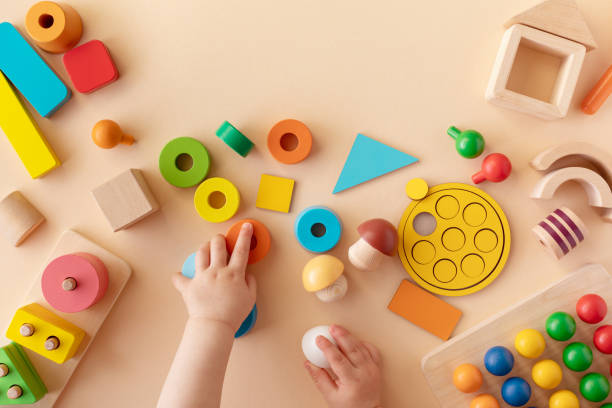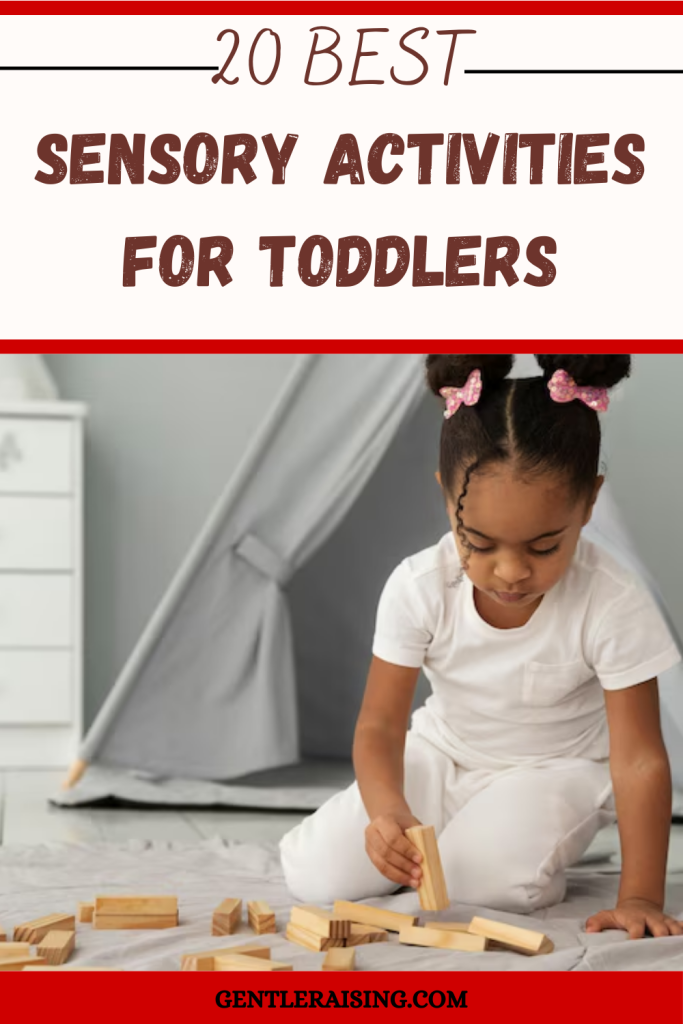Let’s be honest, the 12-to-18-month window is a wonderfully strange phase. Your tiny human is halfway between baby and toddler, wobbling between first steps and full-blown independence, yelling “MINE” with the audacity of a CEO.
And sensory play? It’s not just about keeping them busy (although, let’s face it, that’s a sweet bonus). It’s how they explore, make sense of things, and, quite literally, feel the world around them. It’s finger paint in their eyebrows, pasta stuck to their butt, sand in places sand should never be. But it’s also developmental gold.
So, grab that coffee (hot, if you’re lucky) and let’s talk sensory play, what it is, why it matters, and real-life, no-fuss ways to make it happen.
First, What Is Sensory Play, Really?
Sensory play is anything that engages your child’s senses: touch, smell, taste, sight, sound (and sometimes, yes, balance and movement).
And no, it doesn’t mean buying fancy toys with blinking lights and four-digit price tags. It could be a box of rice. Or a bowl of mashed bananas. Or your kid swishing their hands in a bowl of water like they’re making potions.
Here’s the thing: at this age, they’re not just playing. Their brains are lighting up like fireworks every time they squish, smear, and shake something new.
Why Sensory Play Is Kind of a Big Deal
Besides the cuteness overload of watching a toddler smear yogurt on their nose, here’s what’s going on:
- Brain development: Sensory experiences help build neural pathways (aka your child’s learning superhighway).
- Motor skills: All that grabbing, pinching, pouring? That’s fine motor skill magic right there.
- Language development: When you say, “squishy,” “cold,” or “sticky,” you’re helping your little one build vocabulary.
- Self-regulation: Sensory play can calm them down (hello, water play) or rev them up, depending on the activity.
- Exploration and independence: They’re learning they can affect their environment, which sounds small, but it’s actually huge.
Easy, Low-Stress Sensory Activities You Can Do Today (Like, Right Now)
Let’s cut the Pinterest perfection. These activities are messy, imperfect, and real. And most can be done with stuff you already have.
1. Oobleck Madness
What you need: Cornstarch + water. That’s it.
Mix until it’s goopy but firm when you touch it fast. Feels like science. Because it is.
Why it works: It teaches cause and effect, strengthens fingers, and yes, it’s a sensory jackpot.
Pro tip: Toss a mat under the play area, or better yet, do it outside.
2. Baby-Safe Taste Test
What you need: Tiny samples of safe foods with different textures (banana, cucumber, shredded cheese, soft bread).
Let them poke, squish, and taste (or throw) at their own pace.
Why it works: Introduces texture + taste in a low-pressure way. Bonus: helps picky eaters later on.
Caution: Avoid honey, hard stuff, or anything that can be a choking hazard.
3. Mess-Free Bag Squish
What you need: A ziplock bag + hair gel or paint + duct tape.
Add gel or paint, seal it, tape it to the high chair or floor, and let them smoosh away.
Why it works: Tactile input without the mess. Great for visual tracking, too.
4. Bubble Wrap Mayhem
What you need: Leftover packaging. That’s it.
Let them stomp or press with their hands. Supervised, of course.
Why it works: Develops gross motor skills, plus the pop is just plain satisfying.
5. DIY Sensory Bottles
What you need: Empty water bottles + glitter, beads, buttons, colored water, or oil.
Seal it tight. Shake. Repeat.
Why it works: Visual stimulation, cause and effect, hand-eye coordination.
But What About When You’re Just Too Tired?
We get it. Some days you just need a sensory activity that doubles as “Please entertain yourself while I drink this coffee in peace.”
Here are three go-tos:
- The Tissue Box Game: Stuff a box with colorful scarves or socks. Let them pull, pull, pull. Never gets old.
- Sink Play: Supervised water splashing in the sink. Add cups, sponges, a spoon. Simple bliss.
- Sound Jars: Fill containers with different materials (rice, beans, bells). Shake. Dance. Repeat.
Sensory Play Doesn’t Always Look Like a Science Project
Sometimes it looks like digging in the dirt. Or smearing yogurt. Or flinging cereal off a highchair like it’s confetti.
And you know what? That counts.
Your job isn’t to create the perfect activity. It’s to be there, smiling (or pretending to), watching them learn, and maybe sneaking a few photos while they’re elbow-deep in spaghetti.
Final Tips Before You Break Out the Cornstarch
- Rotate activities: Toddlers get bored fast. Keep things fresh.
- Don’t worry about the mess: That’s what wipes are for. (And honestly, some messes are worth it.)
- Join the play sometimes: They love when you get messy with them.
- Watch for signs: If they seem overstimulated or frustrated, switch gears. Not every activity works every day.
Real Talk: You’re Doing Great
If you’ve made it this far, it means you care. That alone puts you ahead.
Sensory play doesn’t need to be a full-on production. It can be as simple as a walk barefoot on grass, a bath with bubbles, or a curious poke at a sticky raisin.
The point isn’t perfection. It’s presence.
So here’s to messy floors, stained onesies, and curious little explorers. It won’t be this wild forever, but for now, it’s a beautiful, sticky, squishy ride.
P.S. Got a favorite sensory play idea? Share it with your parent group or drop it in the comments if this is part of a blog. You never know whose day you’ll make easier.

